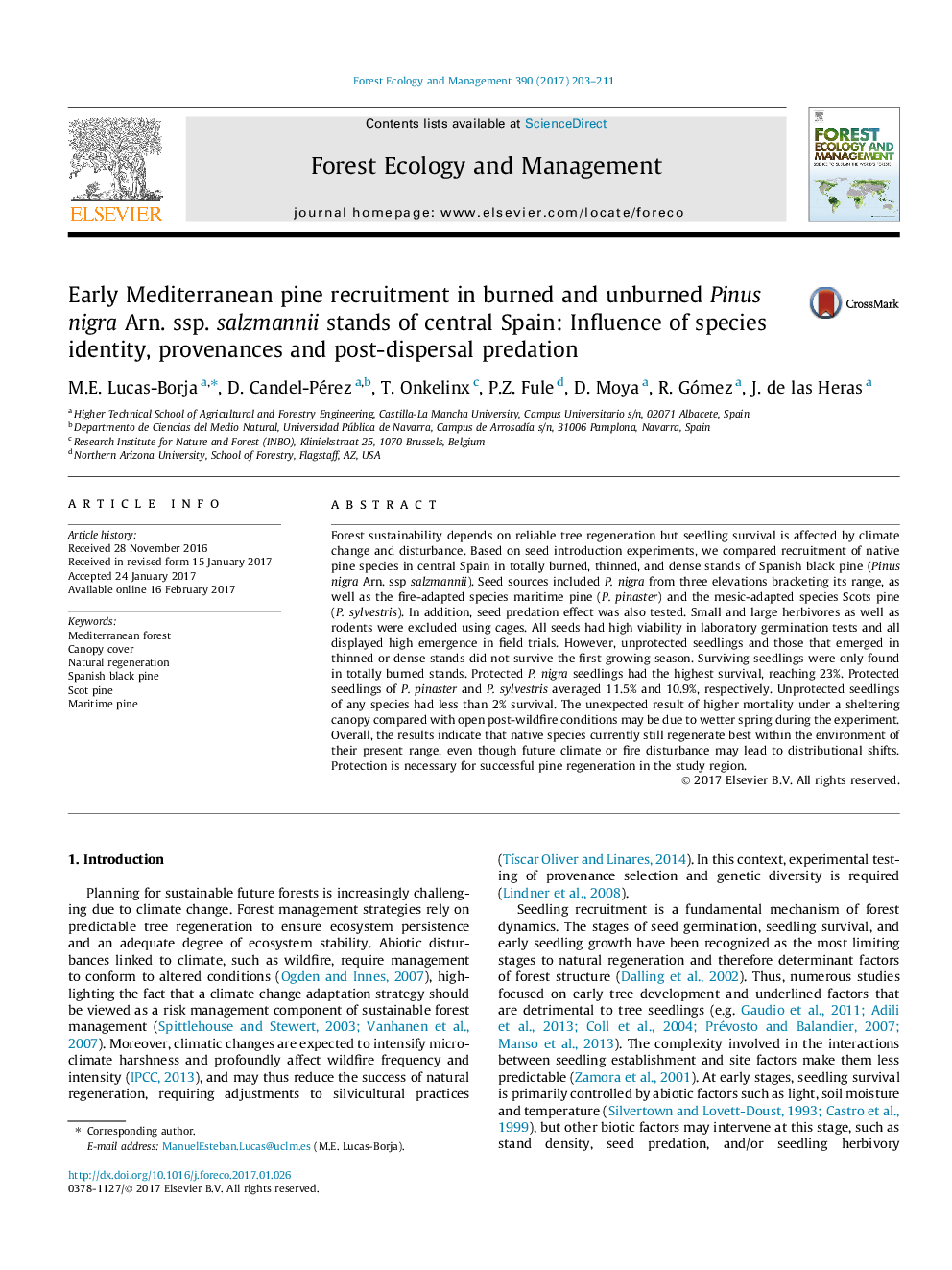| کد مقاله | کد نشریه | سال انتشار | مقاله انگلیسی | نسخه تمام متن |
|---|---|---|---|---|
| 6459534 | 1421368 | 2017 | 9 صفحه PDF | دانلود رایگان |

- Seeds had high viability in laboratory germination tests and all displayed high emergence in field trials.
- Surviving seedlings were only found in totally burned stands.
- Native species currently still regenerate best within the environment of their present range.
- Protection is necessary for successful pine regeneration in the study region.
Forest sustainability depends on reliable tree regeneration but seedling survival is affected by climate change and disturbance. Based on seed introduction experiments, we compared recruitment of native pine species in central Spain in totally burned, thinned, and dense stands of Spanish black pine (Pinus nigra Arn. ssp salzmannii). Seed sources included P. nigra from three elevations bracketing its range, as well as the fire-adapted species maritime pine (P. pinaster) and the mesic-adapted species Scots pine (P. sylvestris). In addition, seed predation effect was also tested. Small and large herbivores as well as rodents were excluded using cages. All seeds had high viability in laboratory germination tests and all displayed high emergence in field trials. However, unprotected seedlings and those that emerged in thinned or dense stands did not survive the first growing season. Surviving seedlings were only found in totally burned stands. Protected P. nigra seedlings had the highest survival, reaching 23%. Protected seedlings of P. pinaster and P. sylvestris averaged 11.5% and 10.9%, respectively. Unprotected seedlings of any species had less than 2% survival. The unexpected result of higher mortality under a sheltering canopy compared with open post-wildfire conditions may be due to wetter spring during the experiment. Overall, the results indicate that native species currently still regenerate best within the environment of their present range, even though future climate or fire disturbance may lead to distributional shifts. Protection is necessary for successful pine regeneration in the study region.
273
Journal: Forest Ecology and Management - Volume 390, 15 April 2017, Pages 203-211